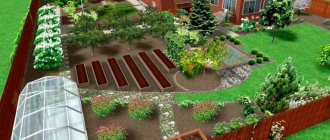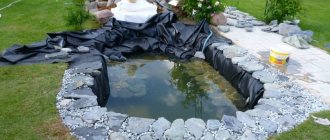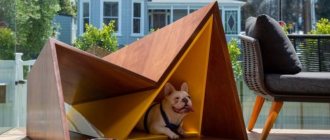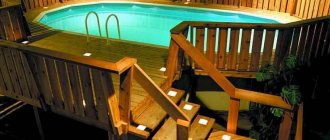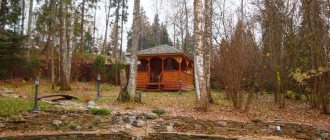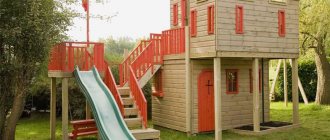The times when summer cottages were used exclusively for harvesting vegetables and berries are almost gone. More and more people are looking to relax and unwind in nature after a week of work.
The country pool copes with this task perfectly. Of course, this building is not essential, but it will bring a lot of pleasant moments.
Pool types
Depending on your needs, you need to decide on the type of pool. They are:
Inflatable frameless. Such pools are quite suitable for 1 – 2 small children. They warm up easily, have a shallow depth, and soft walls. For maximum convenience, we recommend purchasing an electric pump and placing the pool close to a water source.
Inflatable frame. Due to the fact that the base of the pool is reinforced, it can be quite large and suitable for the needs of adult family members.
Such structures must be removed for the winter without fail. Otherwise, the material may not withstand temperature changes.
Frame prefabricated. It would be more correct to call them frame stationary, because if the installation location is correctly chosen and all the rules are followed, they do not need to be dismantled for the winter. Stationary, capital. These are serious structures that require serious preparatory work, from the development of a pool design to the need for constant maintenance.If you decide to build such a structure yourself, you need to know that this will require serious construction skills and sufficient engineering knowledge.
DIY construction stages
After preparing the concrete pool , the actual construction work begins. They are carried out in the following order:
- Preparing the pit . It should be larger than the planned bowl by the thickness of the concrete layer.
- Installation of formwork for pouring mortar.
- Bowl reinforcement, and filling holes for installation of engineering equipment.
- Concreting. It is carried out simultaneously so that the joints between the layers are monolithic.
- Plaster. Then you need to wait until the mixture dries completely.
- Pipe installation and other mortgage equipment for pool maintenance.
- Waterproofing of equipment and bowl by laying film over the entire area of the bowl.
- Decoration at your discretion. It is important that moisture does not come into contact with exposed concrete and does not destroy it.
Composite pools are made faster, since many of the nuances are already provided by the manufacturer. All that remains is to select the appropriate equipment and install it into the system.
What is important to consider when building a swimming pool?
Important! No matter which of the above pools you decide to build, there are points that must always be taken into account.
Relief. If we are talking about the first three types of pools, then you need an extremely flat area, with a sufficient sand cushion on the ground. When placed permanently, the slope of the ground can facilitate the construction of the structure.
Wind direction and large trees. Knowing where the wind usually blows from, it is quite possible to guess where it is better to place the pond so that it is less polluted by fallen leaves and plant branches. They cause water blooms and the appearance of small aquatic inhabitants, which are not always easy to deal with.
- Electric lawn mower: which one to choose?
- Wooden fences
Purchase and inspection of land
Placement of water source. Even if the swimming pool at your summer cottage is small, it will be much more convenient to fill it if it is located close to the water supply or well.
Soil type. If there are different types of soil on the site, you need to understand that clay soil will be better suited for installing any type of pool.
Due to its physical properties, it allows water to pass through worse than other types of soil, which is important if the base of the pool is damaged.
Preparing for work: how to level the surface?
Preparatory activities include the following actions:
- clear the area of branches, debris and other foreign objects;
- level the base using a level;
- permissible slope - up to 5 mm per 1 m.
To properly level the base, you need:
- Insert a wooden stake with a flat end at the top, up to 15 cm long, into the center of the platform.
- Drive the stake into the ground, leaving its top part flush with the ground.
- Take a beam the same length as the diameter of the pool and drive a nail in the center.
- Insert a timber into the peg so that it can rotate.
- Place a spirit level on the beam and slowly rotate it around its axis.
- Mark hills and depressions on the site.
- Eliminate nervousness: fill the depressions with soil and cut off the bulges.
After leveling, the soil must be thoroughly compacted so that it does not sag under the weight of the pool. The platform should be rigid and durable.
Water purification systems
Without a filtration system that matches your pool, it will soon become unusable. The water will begin to bloom and algae and microorganisms will begin to multiply.
Let's look at the main water purification systems:
Overflow. This system allows you to fill the pool bowl to the very edge. The purification process is a continuous cycle of draining some of the water, purifying it and returning it back.
How to make drainage on a site - the secrets of a master on how to make drainage to drain water yourself!- How to clean a pond: a detailed description of how to clean a pond quickly and easily with your own hands (130 photos + video)
Decorate the site according to Feng Shui: location features, design elements, Feng Shui zones. How to work with a ba gua diagram? Secrets of garden decoration
As a disadvantage, one can note its high cost. Most often, such systems are used when constructing swimming pools in country houses.
Skimmer. Suitable for small pools. The water level should always be 15-20 centimeters below the upper border of the side. This system is easy to maintain and inexpensive, but you need to understand that periodically the pool will require partial water changes.
Superficial. It is a filter floating on the surface of the water. Usually there is a replaceable cartridge inside it, which must be replaced when it becomes dirty.
Other. This group includes all less common water purification schemes. There is various experience with chemical cleaning using chlorine, industrial hydrogen peroxide, brilliant green solution, bromine-based reagents, as well as active oxygen and silver ions.
Bowl
The pool bowl is most often made of reinforced concrete : this material has high strength and durability, allows you to create a bowl of almost any shape, and in addition, it can be finished with mosaics or tiles, giving the pool an attractive appearance.
Design of a swimming pool with a concrete bowl
To install a bowl on a personal plot, first of all, a pit is dug (larger than the pool by 50–100 cm on each side). Before starting work, the bearing capacity of the soil and the groundwater level (GWL) are determined. If the groundwater level is high, it is necessary to provide a drainage system: usually this is a layer of crushed stone or gravel of a fraction of 20–40 mm laid on the bottom of the pit. The thickness of the layer depends on how much water will have to be drained. A 20-30 cm layer of sand is poured on top of the crushed stone or gravel (with obligatory watering and compaction), which is necessary for drainage and better distribution of the load on the ground from the side of the pool. Between the sand cushion and the layer of crushed stone or gravel, as a rule, a geotextile fabric is laid so that the sand does not wash out into this layer. If there is no need for drainage, then only a sand cushion is sufficient. A thin layer of M150 grade concrete is poured on top of it - this will be a platform on which installers can walk, and a base for waterproofing the bowl.
Waterproofing is needed to protect concrete from ground and rain water.
For this purpose, roll bitumen materials (gidrostekloizol, etc.) are usually used.
To protect the waterproofing from damage during concrete work, it is recommended to cover it, for example, with a cement particle board or cement screed. Then a reinforcement frame is created and formwork is installed around the perimeter of the future bowl. After that, concrete is poured with mandatory compaction using an internal vibrator. To construct the bowl, concrete with a high degree of water resistance is used - mainly grade B25 W8
. According to many experts, it is best to fill the bowl at one time, so that seams do not appear in the structure, reducing its reliability (the technology requires only a break of 1-2 hours between pouring the bottom and walls of the bowl). Other experts believe that the seam between the bottom and the walls does not pose a danger if debris is carefully removed before pouring concrete into the formwork. In addition, in this case, many companies recommend placing a sealing tape made of hydrophilic rubber in the joint area before pouring the walls.
The thickness of the bottom and walls of the bowl is determined by calculation, but, as a rule, it ranges from 20 to 35 cm. When installing the formwork, holes are provided for embedded parts (skimmer, bottom ladder, return nozzles, lamps, countercurrent and hydromassage nozzles, etc.)
There are two technologies for creating a concrete bowl. The first involves simultaneous filling of the bottom and walls, while there is no so-called “cold seam” at the point where they adjoin. However, this method of concreting is more expensive, since it requires high qualifications from the performers. According to the second technology, the bowl is cast in two stages - first the bottom, and then the walls. Accordingly, a seam appears between them, where leaks may appear over time (for example, when microcracks form in the waterproofing layer). To avoid leaks, before pouring the walls, you should, firstly, thoroughly clean the surface of the base, and secondly, be sure to lay a hydrophilic rubber tape (20 × 10 mm cross-section) at the junction of the bottom and the wall. It is placed between two rows of reinforcement along the entire perimeter of the bottom of the bowl, maintaining the continuity of the contour. When in contact with water, hydrophilic rubber increases in volume, preventing leakage.
After the formwork is dismantled, the outer walls of the bowl are also waterproofed with rolled bitumen material, which, in turn, must be protected from damage when backfilling the soil (it may contain sharp stones and often construction waste). To do this, the waterproofing is covered, for example, with profiled membranes made of high-density polyethylene. However, it is recommended to fill the pit with sand rather than soil, since the latter, among other things, shrinks, which can lead to damage to the pool piping. Often, an outdoor bowl is insulated using 100 mm thick polystyrene foam boards, which are glued to the external waterproofing.
When a pool is erected inside a building or in an extension to it, the bottom of the bowl is usually supported by a foundation slab - usually through reinforced concrete supports.
They allow you to raise the bowl above the stove so that the edge of its walls are at the level of the floor of the room. The number, shape and size of supports are determined by calculation. External waterproofing is not provided in this case.
The inner surfaces of the bowl must be leveled. For this, special cement-based plasters are used, which must have high adhesion and strength (since the plaster layer has to withstand the weight of the water in the pool). After installing the embedded parts, the gaps between them and the bowl are filled with non-shrinking repair compounds, also cement-based. Next, you need to waterproof the bowl from the inside, for which you use coating mixtures based on cement (with polymer additives to increase elasticity) or polymers (epoxyurethane, polysulfide, etc.) applied in several layers.
Among the advantages of cement compositions are low price, ease of application, good adhesion to cement plasters, as well as good adhesion of cement adhesives to them for fixing the finish.
According to a number of manufacturers of such materials, waterproofing sheets made from them can maintain integrity even if cracks up to 2 mm in size appear in the bowl. However, companies involved in the construction of swimming pools assure that they begin to let water through when a crack larger than 0.5-1 mm is formed.
To avoid damage to the waterproofing, it is recommended that in places where cracks are likely to occur (for example, at the junction of walls and the bottom), special reinforcing tapes or fabrics are laid between the layers of waterproofing
The advantages of polymer compounds are high elasticity and durability.
But in comparison with cement ones, they are expensive, more demanding on the quality of the surface to which they are applied and on the application technology - all this makes them less popular. Particular care should be taken to seal the junction of the waterproofing with the embedded parts. The technology for making the joint depends on the type of waterproofing material and the recommendations of its manufacturer.
It should be added that in the case of finishing a pool with a relatively cheap PVC film, waterproofing is not necessary, since the film is not only a finishing material, but also a waterproofing material. There is also no need for waterproofing if the bowl is made not of concrete, but of polypropylene (it is assembled from panels welded to each other on a construction site) or composite (it is usually delivered to the site in finished form).
All reinforced concrete structures of the pool must be carried out according to the design, otherwise, for example, reinforcement may get into those places in the bowl where holes will subsequently be made. Accordingly, the reinforcement will have to be cut off, weakening the structure of the bowl. To avoid problems when operating the pool, you should trust the filling of the bowl to performers who are familiar with all the intricacies of this process. For example, the formwork must be installed so as to leave a gap of at least 25 mm between the outer surface of the bowl and the reinforcement. Plastic clamps allow this gap to be ensured. If the reinforcement is not located in the “body” of concrete, then it will not be able to work with it as a single whole, which will reduce the rigidity of the structure and can lead to corrosion of the reinforcement.
Another nuance: on the outside of the pool, at the junction of the bottom and walls, as a rule, there are internal angles of 90°. In these places it is necessary to create fillets so as not to subsequently damage the external roll waterproofing, which protects the walls of the bowl, during installation.
Interior decoration
For ready-made pools, this issue has already been resolved by the manufacturer, but if you decide to build the pool yourself, then you have options. These are PVC film, mesh mosaic and tiles.
How to arrange a plot in the Russian style: the best ideas for creating a beautiful and cozy plot (145 photos and videos)Do-it-yourself pond on a summer cottage: detailed description of the construction of a decorative pond, design and design options (110 photos and videos)
Stone retaining walls are options for constructing and arranging areas with a slope. 115 photos of landscape design ideas
Finishing with film will be the cheapest, but it will also be the least durable. When choosing tiles, give preference to those made of porcelain; they absorb less moisture.
Temperature maintenance
No one will deny that swimming in cold water is a dubious pleasure. In regions where summer is not always characterized by high temperatures, it is advisable to heat the water additionally.
This can be done using a special heater, or you can make a large greenhouse around the pool. The latter method is suitable for those who have enough space for such buildings.
In conclusion, I would like to say that whichever pool you choose, with a reasonable approach and proper preparation, it will become a source of joy and pleasure for the whole family.
Photo of the pool on the site
Did you like the article? Share

0

